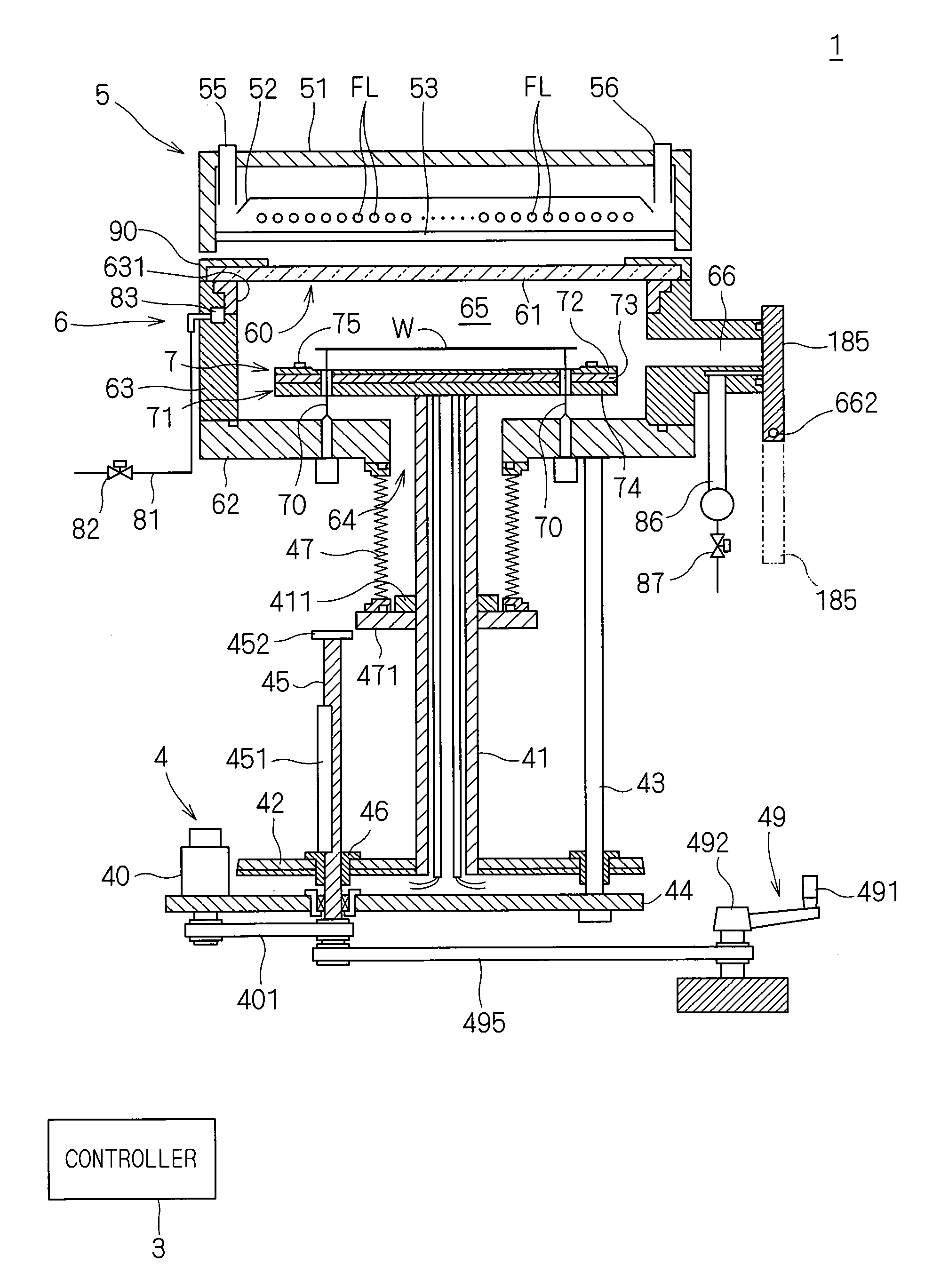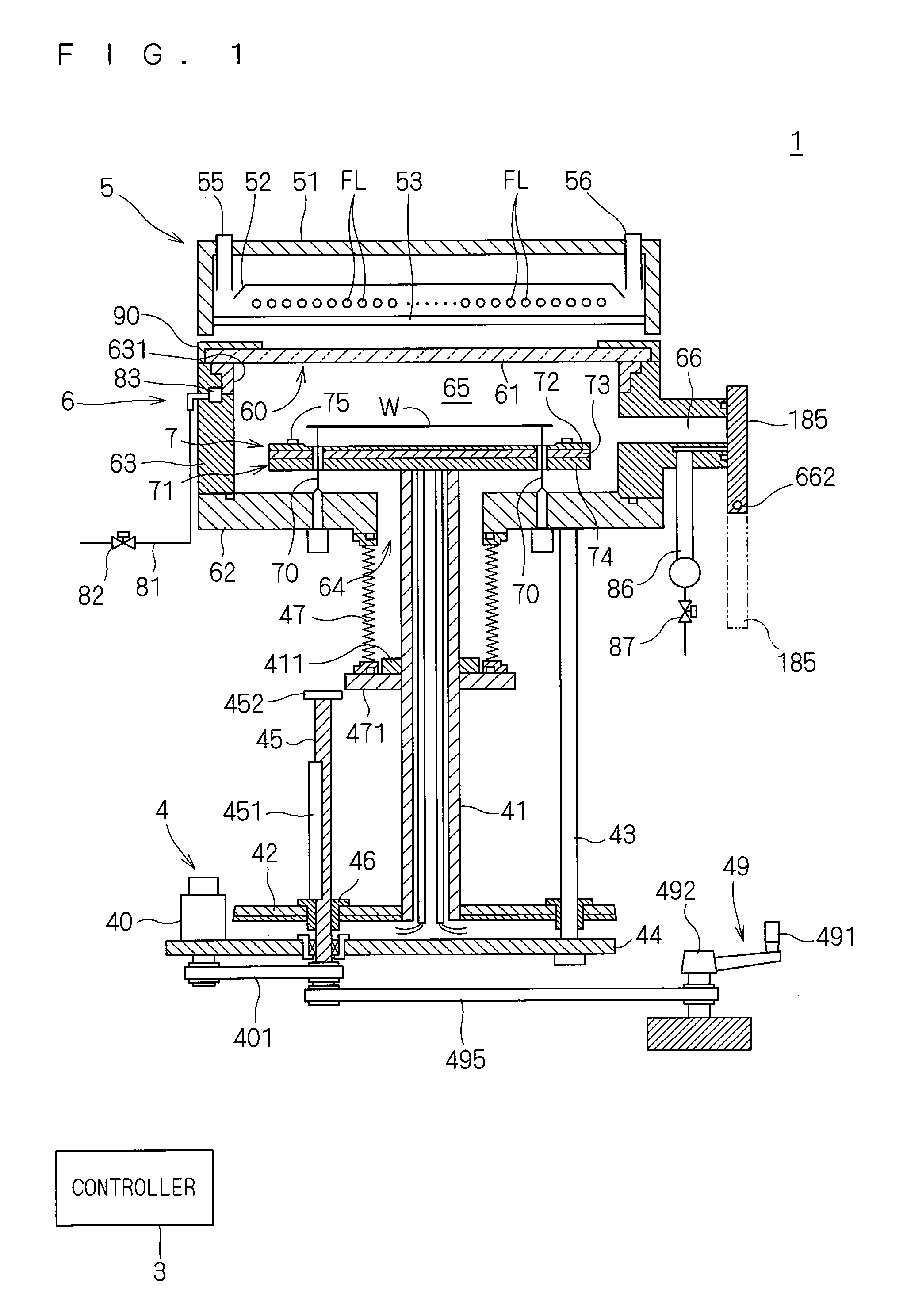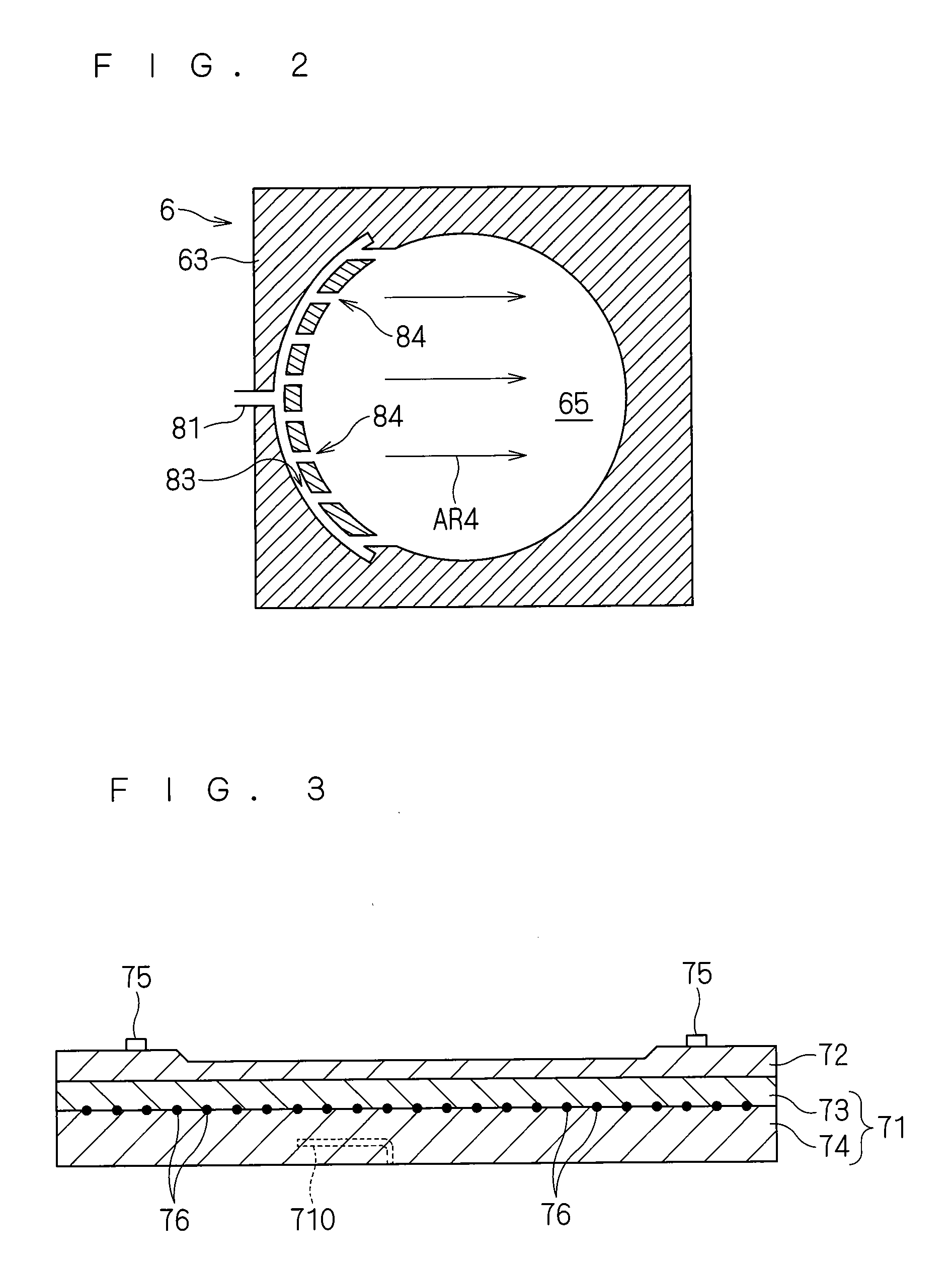Heat treatment apparatus and method for heating substrate by photo-irradiation
- Summary
- Abstract
- Description
- Claims
- Application Information
AI Technical Summary
Benefits of technology
Problems solved by technology
Method used
Image
Examples
first preferred embodiment
[0068]First, a general configuration of a heat treatment apparatus according to the invention is outlined. FIG. 1 illustrates a longitudinal section of a configuration of a heat treatment apparatus 1 according to the invention. The heat treatment apparatus 1 is a lamp annealer for applying light to a generally disc-shaped semiconductor wafer W serving as a substrate so as to heat the semiconductor wafer W.
[0069]The heat treatment apparatus 1 includes a generally cylindrical chamber 6 for receiving a semiconductor wafer W therein; and a lamp house 5 including a plurality of built-in flash lamps FL. The heat treatment apparatus 1 further includes a controller 3 for controlling each operating mechanism provided in the chamber 6 and in the lamp house 5 for the implementation of the heat treatment of a semiconductor wafer W.
[0070]The chamber 6 is located below the lamp house 5 and includes a chamber side portion 63 having a generally cylindrical inner wall and a chamber bottom portion 62...
second preferred embodiment
[0122]Next, a second preferred embodiment of the present invention will be described. A heat treatment apparatus according to the second preferred embodiment is identical in configuration to that of the first preferred embodiment. The procedure for processing a semiconductor wafer W according to the second preferred embodiment is also generally the same as that in the first preferred embodiment. FIG. 12 shows another example of the correlation between a pulse signal waveform and a current flowing through a circuit. In the second preferred embodiment, the pulse generator 31 outputs a pulse signal having a waveform as shown in the upper part of FIG. 12. The pulse waveform shown in the upper part of FIG. 12 includes a plurality of relatively short pulses PD in the earlier section, then a plurality of pulses PE, and then a single relatively long pulse PF. In the second preferred embodiment, a pulse signal having a waveform as shown in the upper part of FIG. 12 is applied to the gate of ...
third preferred embodiment
[0137]Next, a third preferred embodiment of the present invention will be described. A heat treatment apparatus of the third preferred embodiment is identical in configuration to that of the first preferred embodiment. The procedure for processing a semiconductor wafer W according to the third preferred embodiment is also generally the same as that in the first preferred embodiment. The third preferred embodiment differs from the first preferred embodiment in the output waveform of the light-emission output of a flash lamp FL. FIG. 14 shows a profile of the light-emission output of a flash lamp FL according to the third preferred embodiment. The light-emission output of a flash lamp FL is almost proportional to the current flowing through the flash lamp FL, so that the profile of the light-emission output of a flash lamp FL can be controlled by controlling the waveform of a pulse signal that is output to the gate of the switching element 96.
[0138]The output waveform of light shown i...
PUM
 Login to View More
Login to View More Abstract
Description
Claims
Application Information
 Login to View More
Login to View More - R&D
- Intellectual Property
- Life Sciences
- Materials
- Tech Scout
- Unparalleled Data Quality
- Higher Quality Content
- 60% Fewer Hallucinations
Browse by: Latest US Patents, China's latest patents, Technical Efficacy Thesaurus, Application Domain, Technology Topic, Popular Technical Reports.
© 2025 PatSnap. All rights reserved.Legal|Privacy policy|Modern Slavery Act Transparency Statement|Sitemap|About US| Contact US: help@patsnap.com



